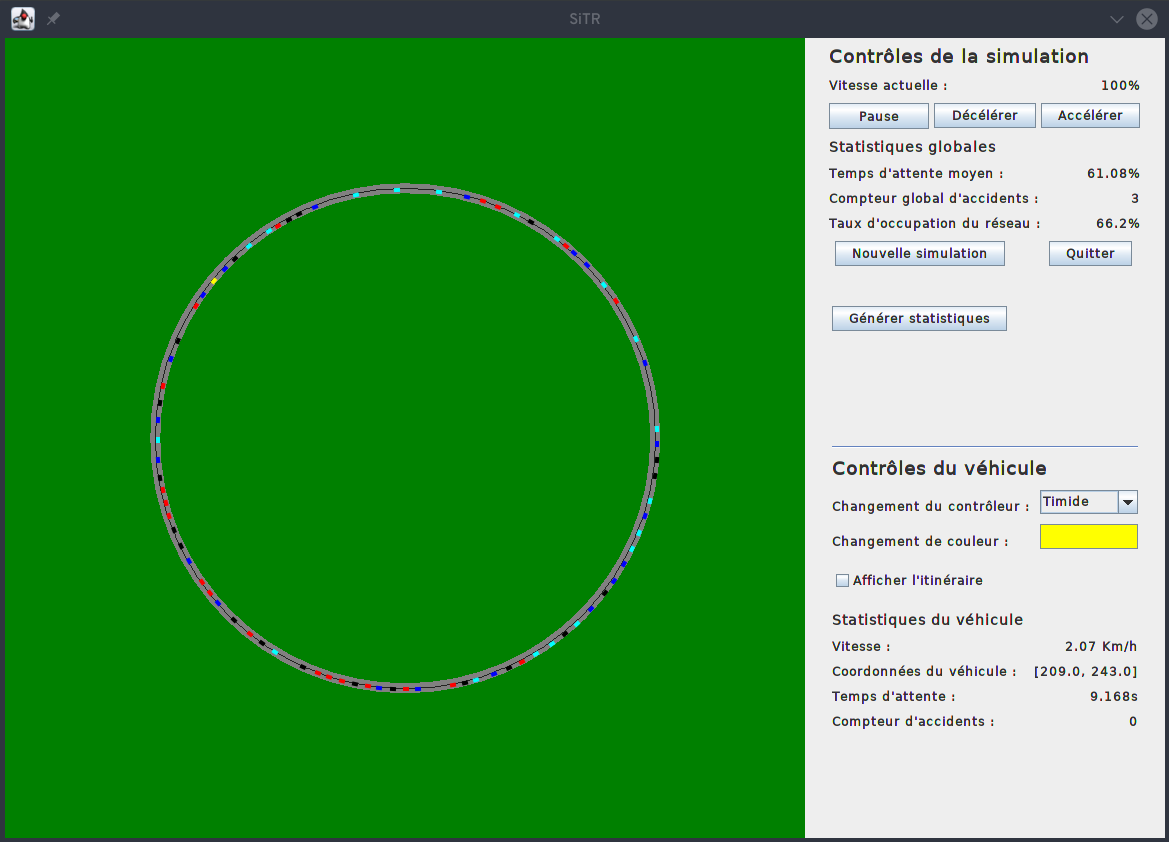SiTR (Road traffic simulation) is a simulation tool with a goal to analyse road traffic and give statistics on its users and the road network itself. Vehicles can behave differently based on the type of controllers they are assigned. One goal is to make conclusions on the effect of augmenting autonomous vehicles amounts in a standard setting (with other, non autonomous vehicles).
In this sense, SiTR has a microscopic approach to simulation, but it will also be able to get more global statistics from the simulation. Its analyses will be run on predefined, small-scale scenarios. These will simulate a small and interesting part of a road network.
| Name | Github | |
|---|---|---|
| Loris Gilliand (project lead) | [email protected] | texx94 |
| Alexandre Monteiro Marques | [email protected] | X-Brast |
| Eric Noël (deputy project lead) | [email protected] | Eric-Noel |
| Mateo Tutic | [email protected] | mtutic |
| Luc Wachter | [email protected] | Laykel |
| Simon Walther | [email protected] | Waltharnack |
Used through the .jar file, this application needs nothing more than Java 8 or above to run.
In order to compile and run this project yourself, you'll need Apache Maven (v. 3.5.4).
Maven will take care of the following dependencies for you:
- jUnit v. 5.4
- Lombok v. 1.18.2
- jDOM2 v. 2.0.6
- jaxb v. 2.3.0
- Commons math 3 v. 3.6.1
Thanks to Apache Maven, running mvn package should suffice to run tests and create the jar file in target/sitr-1 .0-SNAPSHOT-launcher.jar.
You can also use the most recent .jar file in the "releases" section of our GitHub repository.
- The program can be run using the previously mentioned jar file using
java -jar sitr-1 .0-SNAPSHOT-launcher.jar(or another name if you downloaded it from the "releases" section).
Class diagrams, mock-ups, design decisions and style guidelines can be found the wiki (in french).
We also provide a user manual and an installation guide at the end of our project report, which can also be found in the "releases" section on our GitHub repository.
The API documentation can be generated using an IDE with support for JavaDoc, but a generated version is available in the "releases" section.
